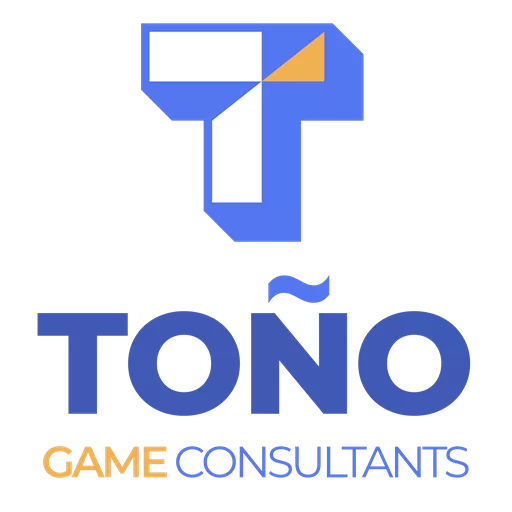Game development is an art form, but for those of us working in the industry, it’s also a livelihood. Creativity fuels the spark, but business realities determine whether a project survives. And in today’s climate of rising budgets and studio closures, building a solid business case for your game is no longer optional.
The heart of that business case comes down to one principle: your game must show the potential to return at least 3x the cost of development.
Why 3x the Development Cost?
A healthy return on investment in game development is generally considered to be around 3x the cost of development. This creates enough margin to cover not just production, but also the many other expenses that come with shipping a game, marketing, platform fees, and unexpected overruns.
For example, if you’re planning to spend $250k developing your game, you should also plan for a similar amount in promotion, marketing, sales, porting, localization, and so on. That puts your total spend closer to $500k. To make the numbers work, you should aim for at least $750k in revenue as a baseline. If you can position your game closer to 4x the development cost, even better, that buffer gives you a safety net if things don’t go as planned.
Defining Your Market: Not Everyone Is Your Player
The fastest way to sink a business case is to say, “Our game is for everyone.” No game is for everyone.
Steam alone has over 39 million concurrent users as of August 2025, but that doesn’t mean every user is a potential buyer. To build a realistic market case, you need to think of your audience in layers:
-
Genre Audience (First Layer): Start with the percentage of players who enjoy your type of game. Roguelike, strategy, puzzle — each genre attracts different audience sizes and engagement levels.
-
Money Tolerance (Second Layer): Out of those players, how many are willing to spend the price you plan to launch at? At this stage, the key question is: What percentage of players who like this type of game are actually willing to buy it at that price point? Once you see the results and compare them with similar games, you can judge whether your pricing is on target or needs to be adjusted.
-
Demographics & Reach (Third Layer): From the group that remains, filter for the players that match your target demographics: region, device, age range, or social factors. A PC-only launch means console players aren’t part of your addressable market.
By working through these three layers, you move from the Total Market Potential (everyone who could possibly be interested in your type of game), to the Total Addressable Market (the percentage of those players who are willing to pay your intended price), and then to the Segmented Addressable Market (filtered further by demographics such as region, device, and/or age group).
The next step is to calculate your Expected Share of Addressable Market, the percentage of players you realistically need to capture in order for your project to be considered a success.
Setting Minimum Standards
Now that you know your audience, the next question is: how many players do you need to reach your 3x goal?
-
At $20, you’ll need roughly 37,500–50,000 players to hit $750k–$1M in sales.
-
At $30, you’ll need 25,000–33,000 players.
-
At $10, you’ll need 75,000–100,000 players.
This math isn’t meant to kill dreams — it’s meant to give clarity. By defining the minimum viable sales target, you can judge whether your game has the potential to be a sustainable project or an expensive gamble.
Once you know your sales target and the size of your Segmented Addressable Market, you can calculate your Expected Share — the percentage of that market you’d need to capture for success. How much of that market you believe is achievable depends on your own situation and risk tolerance. A smaller, more focused studio might view this very differently than a AAA team with brand recognition and marketing power.
If the numbers feel out of reach, you have two levers you can pull:
-
Adjust your price point. A higher price lowers your required sales but can shrink your Total Addressable Market (fewer players willing to pay). A lower price broadens your market but requires more volume.
-
Expand your Segmented Market. Add regions, devices, or demographics to increase your potential pool — though this often comes with costs like localization, porting, or new marketing campaigns.
By combining these levers, you can shape a path where your Expected Share feels realistic for your team and your game.
Learning From Comparable Games
Numbers mean little without context. To validate your projections, check other games in the same space that managed to reach the level of sales you’re targeting:
-
How many units did they sell?
-
What price point worked for them?
-
Was their scope, polish, and quality comparable to what you’re building?
If your game can realistically stand side by side with those titles when it’s finished, that’s a good sign you’re on the right track. If not, you may need to adjust your scope, polish, or positioning to reach that level. And if you can stand above them, that’s even better.
Premium vs. Freemium Models
Most indie and mid-tier studios still pursue premium games, charge once, deliver the experience. The math is straightforward, and ROI is tied directly to sales.
But if your game is freemium, the strategy shifts:
-
Entry is free, so you face little resistance getting players in the door.
-
Revenue depends on Average Revenue Per Paying User (ARPPU) and overall volume.
-
Monetization comes from convincing players to pay for extras: cosmetics, boosters, expansions, or convenience.
Examples like Hearthstone or Pokémon Go show how volume + monetization design can generate massive revenue. But this model requires consistent player engagement, live operations, and careful balance — and it often demands higher upfront investment to sustain servers, content pipelines, and support.
Hybrid Models
Not every game fits neatly into “premium” or “freemium.” Some titles use a hybrid approach, charging an upfront price for the base game, while also offering optional purchases for players who want more.
A well-known example is Among Us. The game launched as a low-cost premium title but later added cosmetic items and skins as optional purchases, creating an additional revenue stream. This mix allowed the game to benefit from the stability of a premium model while also tapping into the scalability of a freemium approach.
Hybrid models can work especially well when:
-
The base game provides a complete, satisfying experience at a fair price.
-
Extras are truly optional — cosmetics, skins, or small perks — that don’t fracture the player base or feel exploitative.
-
The added revenue helps sustain the game post-launch, fund updates, or extend its lifecycle.
For developers, this approach provides more flexibility in building a business case. It doesn’t rely solely on high volume premium sales or freemium “whale” spending. Instead, it creates a layered revenue structure where both casual and dedicated players contribute.
The Hard Truth About Funding
If your financial numbers don’t make sense, if your market sizing or ROI targets don’t add up — then investors, publishers, and VCs are going to pass. For them, the answer will be no.
That doesn’t mean your game can’t happen. It means you’ll need to pursue alternative funding paths:
-
Crowdfunding: Build community early, secure upfront player support.
-
Self-funding: Use personal capital or side revenue to carry development.
-
Staged funding: Release smaller builds or Early Access to generate traction.
And sometimes, traction changes everything. If your game gains momentum with players through crowdfunding or Early Access, investor and publisher doors may open later. But at the start, you need a financial case that makes sense on its own.
Closing Reflection
Game development will always be art — but to survive as an industry, we must also treat it as business. That doesn’t mean stripping away passion or creativity. It means ensuring that your game has the numbers to stand on its own, so you can secure the funding and stability needed to bring your vision to life.
If you’re unsure how to size your market, profile your players, or validate your game’s ROI, that’s where I can help. As a Product Owner with 17 years in software and 11 in games, I specialize in helping teams translate their creative vision into financial clarity.
Book a time with me on Calendly, to talk about building the business case for your game.
FAQ: Building a Business Case for Your Game
1. Why do I need to build a business case for my game?
Because creativity alone doesn’t pay the bills. A business case shows whether your project has the financial potential to sustain itself. It helps you understand your required ROI, market size, and funding strategy, making your project more attractive to investors or publishers.
2. What is a healthy ROI for a game project?
A healthy return is often considered around 3x the cost of development. This margin creates room to cover marketing, platform fees, and unexpected costs. For example, a $250k development budget should aim for about $750k in revenue, with 4x being even better.
3. How do I figure out my target market?
Start by breaking it into layers:
-
Genre audience: What percentage of players enjoy your type of game?
-
Money tolerance: How many of those players are willing to pay your intended price?
-
Demographics: From that group, who matches your target region, platform, and age range?
This process narrows a broad player pool into a realistic, segmented market.
4. How do I calculate how many players I need?
Take your target revenue (3x your development cost) and divide it by your intended price point. For example:
-
$20 game → ~37,500–50,000 players
-
$30 game → ~25,000–33,000 players
-
$10 game → ~75,000–100,000 players
This gives you your minimum viable sales target.
5. What if my sales target feels unrealistic?
Then you need to adjust one of two things:
-
Price point – Raising the price lowers sales requirements but shrinks your total market. Lowering it expands the market but requires more volume.
-
Segmented market – Add regions, devices, or demographics to grow your potential audience (though this often means extra costs like porting or localization).
6. Why should I look at other games for comparison?
Because numbers mean little without context. By checking sales data from similar games in your genre and price range, you can see if your projections are realistic. If your game can stand side by side with those titles, you’re on firmer ground.
7. Should I choose premium or freemium for my game?
It depends on your design and business goals. Premium games rely on upfront sales, while freemium games rely on volume and monetization through in-game purchases. Both have trade-offs: premium offers stability, freemium offers scale.
8. Can I mix premium and freemium models?
Yes. Many games use a hybrid model — a paid base game plus optional cosmetics or extras. Among Us is a good example, offering a low-cost entry plus cosmetic purchases. Hybrid models create layered revenue streams that appeal to both casual and dedicated players.
9. What if my business case doesn’t add up?
If your ROI projections or market sizing don’t make sense, traditional investors and publishers will likely say no. That doesn’t mean your game can’t happen, it just means you’ll need to explore alternatives like crowdfunding, self-funding, or Early Access to build traction.
10. When should I build the business case, before or after starting development?
Ideally, you should start shaping your business case as early as possible. At the prototype stage, you can keep things very rough, but by the time you’re building your vertical slice, the business case should be taking form alongside the game itself.
A vertical slice shows the core gameplay and quality you’re aiming for, while the business case shows whether the project has the financial legs to stand on. Together, they make a much stronger pitch to investors or publishers.
Yes, some teams get away with building and selling a game without a strong business case, but it’s much harder, and in today’s competitive market, publishers increasingly demand both. If you already have a strong reputation in the industry, you may find publishers are more flexible. But for most teams, a clear business case during the vertical slice stage is the difference between getting funded and being overlooked.


